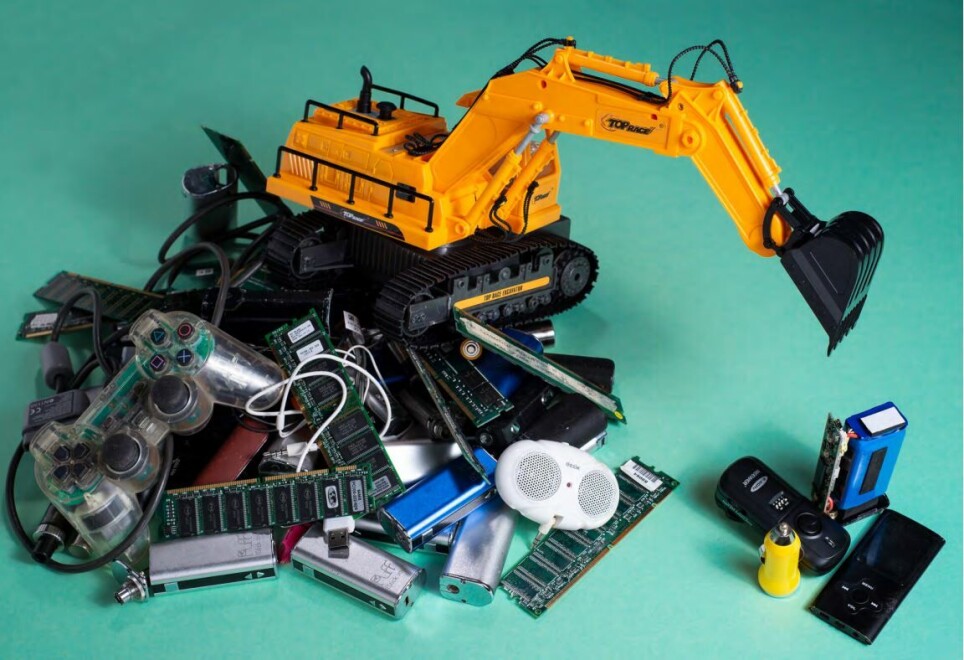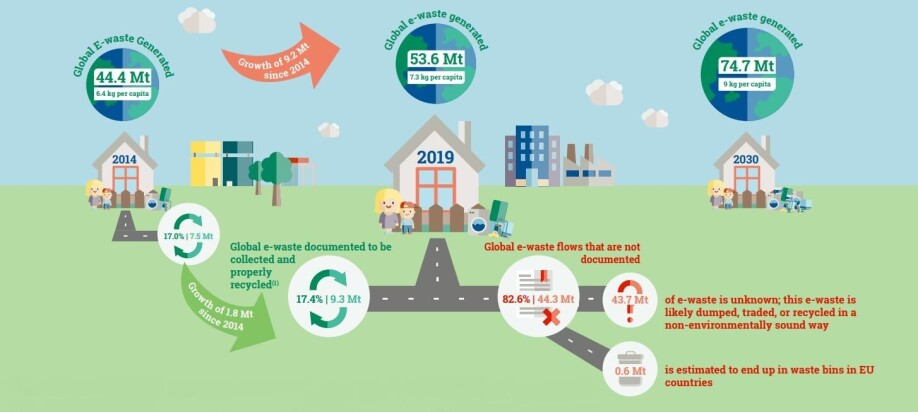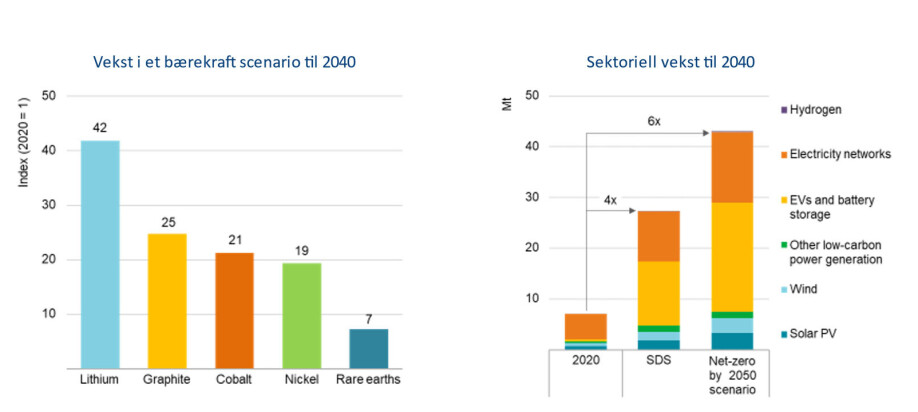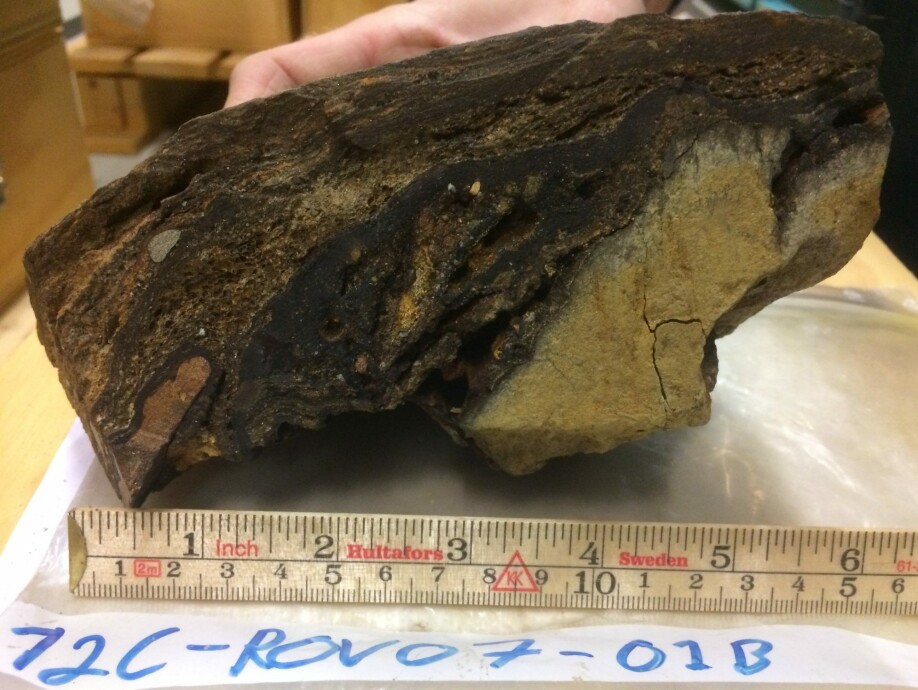THIS ARTICLE/PRESS RELEASE IS PAID FOR AND PRESENTED BY SINTEF - read more

Demand for rare minerals and metals creates eco-dilemma
The world is crying out for rare minerals for the manufacture of electric cars, wind turbines and other technologies that we simply need more of. But how can we guarantee access to these resources without threatening the natural world and mankind as we know it?
According to the International Energy Agency (IEA), the demand for so-called critical raw materials (CRMs) will increase sevenfold by 2050. The reason for this is that our green, renewable energy technologies require far more metals and other materials than those used to supply fossil energy. The electric cars that carry us from A to B will require six times more minerals than our traditional petrol-driven cars, and the wind power technologies that provide us with renewable electricity will be demanding nine times more of these resources than our gas-fired power plants. And this demand is set to accelerate rapidly in the very near future.
Dilemma facing the green transition
One risk we face is of a gap emerging between our demand for CRMs resulting from global ambitions to mitigate climate change, and our actual ability to access these materials. Another risk is linked to the consequences of the environmental damage we inflict as a result of mining activities and the production of CRMs. Currently, many of these metals and minerals are sourced from mines in countries such as China and Congo. Their extraction has a negative impact on both mankind and natural ecosystems. These two risks represent two good reasons why Europe should be aiming to become self-sufficient in these critical raw materials.
“The purchase price of primary metals sourced from these countries may be low, but the real price often has to be paid by the local environment and its inhabitants,” says Ana Maria Martinez, who is a Senior Research Scientist at SINTEF. “Issues surrounding employment conditions and the environment are good enough reasons to focus our attention on the potential for materials recovery closer to home here in Europe,” she says.
Recycle before extraction
Over the years, Martinez has headed a number of projects aimed at developing effective technologies for the recovery and recycling of CRMs. We asked her whether she thought that Europe will be able to succeed in obtaining the materials it needs in ways that protect people and our natural ecosystems.
“No, not with the systems and regulatory frameworks under which we operate today. If we are to recover these materials we will have to develop technologies that facilitate intelligent and sustainable materials management,” she says.
Martinez is one of many scientists who was quoted on this topic in a BBC article: How to mine precious metals in your home. The concept of ‘urban mining’ addresses the process of sorting rare and valuable metals from the waste generated by industry and in our homes, and hidden in everything from electronic devices, metal smelting slags and the by-products of fertiliser manufacture.
“An urban mining initiative will help towards a more sustainable future, pave the way for better resource exploitation, and make us less dependent on metals being mined on the other side of the world,” says Martinez. “It may be commercially viable and may also reduce our need to carry out environmentally damaging mining activities.”
Ana Maria Martinez has been in the vanguard of a number of projects seeking to identify ways of ensuring that Europe can obtain sustainable access to valuable resources. One of these was a project called REE4EU.The REE4EU project was acclaimed by the Solar Impulse Foundation as having developed a promising and sustainable technology, which is used when electric and hybrid vehicles are ready to be scrapped. The demand for such a technology will increase in step with the transition from fossil fuel to electric vehicles.

Sitting on
Currently, only a third of all electronic waste (WEEE) generated in Norway is collected and processed appropriately. The rest is collected by unregistered enterprises or is exported illegally out of the country.
But there is a chest of mineral treasures lying hidden both in our homes and on our waste tips. These materials are resources that can be recycled and reused. Our homes are full of electronic devices, and if you check their contents carefully you will be able to tick off almost all of the elements in the periodic table.
“Many people are perhaps not aware that they are sitting on one of the very keys that can open the doors to the green transition,” says Martinez. “We tend to hang on to our old devices in the hope that we may someday be able to use them again. This is a day that seldom comes, if ever,” she says.
Martinez claims that such consumer consciousness is a barrier to the creation of a materials flow system that could breathe new life into our old junk and scrap. She goes on to add:
“We must re-evaluate our attitudes to electronic products. As consumers we must take responsibility for our own homes and consumption. And our politicians must grasp the nettle and take responsibility for introducing measures that encourage recycling as the preferred option,”
Ana Maria Martinez is demanding that politicians promote more progressive directives that encourage lifestyles and business practices that are in step with circular economy principles. In practice, this is all about reducing our materials consumption and introducing higher levels of co-use. It means manufacturing products that can be recycled. It means creating effective waste treatment schemes and, not least, it means ensuring that recyclable materials become the natural choice as components for the new products that we manufacture.

We need return logistics in all sectors
Ana Maria Martinez is conducting research into new technologies that will enable the recovery of valuable materials from waste streams. At the other, manufacturing, end of the products’ life cycles, Stine Sonen Tveit is researching into so-called return logistics. She agrees with Martinez.
“It makes economic sense to put effective return logistics systems in place,” says Sonen Tveit. “This often starts as early as in the design phase. We have to start designing products with ultimate disassembly and recycling in mind,” she says.
Sonen Tveit and her colleagues have developed a strategy for the return and recycling of furniture items. She is keen to emphasise how vital it is to standardise components in order to simplify repair, sorting and recycling, and that companies in a variety of sectors should collaborate to recover the value contained in the products for which we no longer have any use.
“There are many companies in Norway that have the circular economy in mind and are looking to manufacture goods more sustainably,” she says. “But without any express demand in the market, consumer awareness or regulatory requirements, small- and medium- sized businesses will not be able to convert their ambitions into action. This is where Norway is lagging behind many countries in the EU,” she says.
Massive need for minerals and new knowledge
Research Director Lars Sørum at SINTEF Industry recently took part in a seminar on seabed minerals at which some of Norway’s leading scientists were brought together with international experts.
“After attending the seminar it became very clear to me that we need more knowledge, and that we need to get hold of it fast,” he says.
The reason why the world demands large volumes of minerals is so that it can achieve the target of net zero emissions by 2050. This is set out in detail in the IEA report that addresses this issue.

We must protect life in the oceans
According to Sørum, it is vital that we succeed in the major industrial-scale recycling of these minerals. But before we reach that point, we first have to access the large volumes of minerals that can be fed ‘into the system’ from which they can later be recycled. This means that it will also be necessary to mine the minerals, such as those containing cobalt, manganese and nickel, among others, from the raw materials resources that still remain both on land and in the oceans.
“But these minerals will have to be extracted as sensitively and sustainably as possible,” says Sørum. “And we have to be sure that we will not be damaging key marine ecosystems in the process. We also have to weigh up the benefits and shortcomings of mineral extraction from the sea floor against those from mining onshore. We must look into the economics, climate- and environment-related issues, as well as other key factors such as geopolitics,” he says.
Sørum believes that seabed extraction will also contribute to wealth generation. It will create jobs and, not least, help fuel the transition taking place in the oil and gas sector. Currently, the majority of our minerals are sourced from China and countries in Africa. Europe lacks its own natural mineral resources. But we do have resources lying on the ocean floor not so very far away.

More sustainable than mining on land
And perhaps it is possible to combine sustainability with the transition taking place in the Norwegian oil and gas sector? One of the reasons for this is that minerals on the seabed often occur in high concentrations. This makes it possible to extract large volumes of raw materials from relatively small areas using limited resources. Seabed extraction will also eliminate the need to find space for spoil disposal because the spoil material can be transported back to the location from which it was first extracted.
“The quarries that we exploit today are already close to exhaustion, and as a result extend over wide areas. This is not necessarily good for the environment,” says Sørum.
See more content from SINTEF:
-
How Svalbard is becoming a living lab for marine restoration
-
New study: Even brand-new apartments in cities can have poor indoor air quality
-
Fresh hope for patients with chronic inflammatory bowel disease
-
Testing a giant ship: May take five kilometres to stop
-
A robot is helping researchers hunt for the best cancer warriors
-
Locomotives that run on diesel can be electrified





































